Yousafzai_M
FULL MEMBER

- Joined
- Feb 1, 2015
- Messages
- 742
- Reaction score
- -1
- Country
- Location
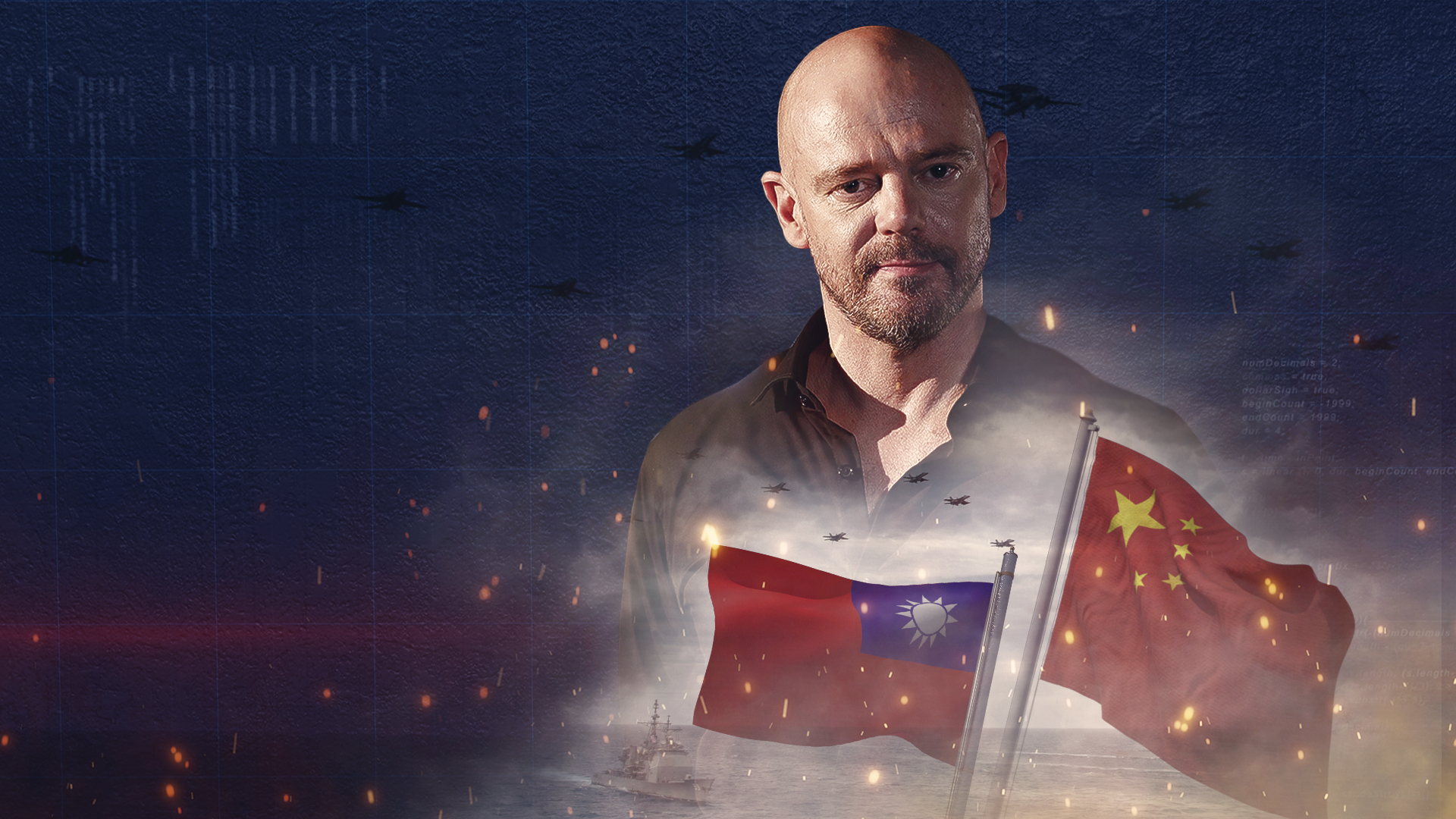
How difficult would it be for China to invade Taiwan?
As observers worry about the growing possibility, an invading force would still have huge challenges to overcome.
As observers worry about the increasing possibility, an invading force would still have huge challenges to overcome.
By Alex Gatopoulos
Published On 4 Apr 20224 Apr 2022
The invasion of Taiwan, officially the Republic of China (ROC), has been considered by Chinese military planners for decades but only under President Xi Jinping have observers worried this might be increasingly likely.
Taiwan, formerly the island of Formosa, was the last bastion that held out against Mao Zedong’s victorious Communist army after elements of the defeated nationalist Kuomintang military retreated to the eastern island in 1949.
KEEP READING
list of 4 itemslist 1 of 4Taiwan’s ‘silicon shield’: Why island may not be the next Ukraine
list 2 of 4Xi tells US to handle Taiwan ‘properly’ to avoid damaging ties
list 3 of 4US, China discuss Russia as Biden and Xi hold call
list 4 of 4United States should recognise ‘free’ Taiwan, Mike Pompeo says
end of listThreats of military action against the self-ruled island have escalated during times when some Taiwanese political parties have debated whether to declare independence. Taiwan has had no seat at the United Nations for 50 years.
President Xi’s rise, with his focus on centralised control and a new, professionally-run, modern military, has set off alarm bells around the world.
This, combined with explicit rhetoric from China’s president that “Taiwanese independence separatism” was “the most serious hidden danger to national rejuvenation” has refocused global attention on the possibility of China using force to take the island. The aggressive patrolling and overflights of Taiwanese airspace by aircraft from the Chinese air force have added a sense of urgency that this could very well happen in the near future.
But how difficult would it be for China to successfully invade Taiwan?
In terms of relative size and power, it might be considered a foregone conclusion but the multiple challenges an invading force would face would be substantial.
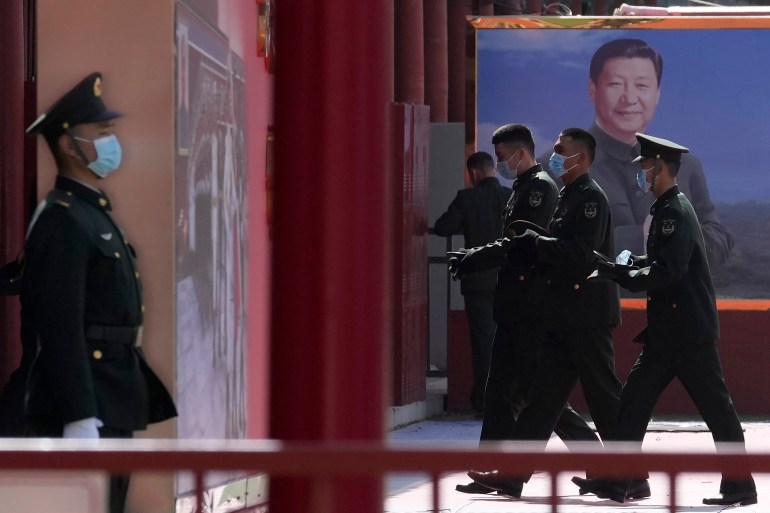
An invasion’s opening phase
First, the distance an invasion fleet would need to travel before it even gets to the island is daunting. The Taiwan Strait is 128km (79.5 miles) at its narrowest point between mainland China and Taiwan and much wider if embarkation ports where an invasion force would gather are to be considered.While airlifts and vast fleets of planes can move a few thousand troops and keep them supplied, the sheer number of soldiers and vast quantities of supplies – armoured vehicles, artillery, ammunition, food, medical supplies and fuel – needed for a successful invasion could only move by sea.
A huge fleet would have to be assembled; colossal stores of equipment would have to be packed into hundreds of ships.
Sign up for Al JazeeraWeekly Newsletter
The latest news from around the world.Timely. Accurate. Fair.
Sign up
By signing up, you agree to our Privacy Policy
This heavily-laden fleet would only be able to move slowly and would be extremely vulnerable to long-range missile and air attacks and attacks by submarines.
Despite the best efforts of the Chinese navy and air force, the invasion fleet, in the open for hours, would be massively exposed before it even got into a position where it could begin its attack on the Taiwanese shoreline. These assaults would have to be timed to hit the island’s beaches and ports simultaneously in order to overwhelm the defending forces.
By far the quickest way for this giant fleet of ships to offload all the troops, weapons, vehicles and supplies needed for a successful invasion would be using the facilities of captured ports. They would therefore need to be taken quickly and remain reasonably intact.
At the same time, airports and airfields would need to be seized and held from counterattack until Chinese military transport planes could land, carrying elite troops and armoured vehicles.
Taiwan’s air defences and air force would need to be suppressed and ideally destroyed in the opening phase of the invasion.
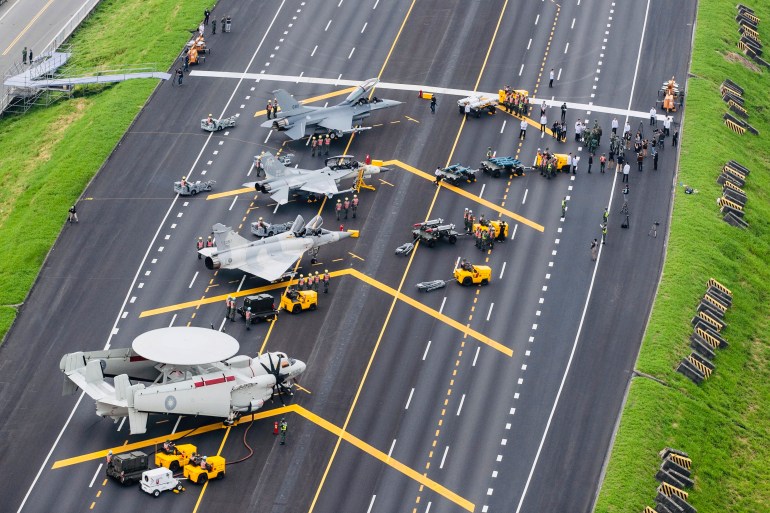
Taiwan’s barriers: Cities and islands
The island is made up of a heavily-forested mountain ridge that runs down the length of the roughly oval-shaped island, which from north to south is 395km (245 miles).To the west of the mountain ridge lie fertile plains and large sprawling cities. Taipei, the capital, is in the north, Taichung is in the centre and Kaohsiung to the south are spread out, forming a natural defensive barrier that would slow any advance by the Chinese People’s Liberation Army (PLA) to a crawl. Soldiers would have to fight their way through dense, urban sprawls and blocks of apartments that can easily be turned into heavily defended strongpoints.
The whole western side of the island is crisscrossed with rivers and canals. Taiwan has few beaches suitable for amphibious landings and any force would immediately have to fight its way ashore while deadly counterfire poured down from the surrounding high buildings and cliffs overlooking the beaches.
But the ROC is not just the main island of Taiwan, it includes many little islands scattered across the Taiwan Strait.
Some chains like Matsu and Kinmen lie just off the coast of mainland China.
The other main island chain, Penghu, is an archipelago of 90 islands and islets. Lying off the coast of Taiwan, these would be a deadly obstacle to any invading force.
Extremely well fortified, the largest islands bristle with anti-ship and anti-aircraft missiles, early warning radar systems and well-trained troops.
They would easily detect the presence of a large invasion fleet and would be able to report on its movements and inflict damage on the PLA navy’s slow-moving transport ships before the fleet even made it to the target ports and beachheads.
These islands, therefore, would need to be taken at the very start of any conflict.
Tens of thousands of commandos would be needed to quickly seize them and render the islands’ many defences inert before any invasion could commence. As soon as this happens, Taiwan and its allies would be immediately alerted that an invasion has started.

Trained for an invasion
Taiwan’s military, although smaller in size than the PLA, has been increasingly well trained for this exact scenario – an invasion by mainland China.Taiwan’s main provider of arms, the United States, only sells defensive weapon systems to Taiwan. So the Taiwanese military has had no option but to develop its own offensive systems, building precision-strike weapons, hardened aircraft shelters and advanced underwater mines.
According to the International Institute of Strategic Studies, the island’s armed forces, 163,000 active service members, with 1.6 million more in reserve, are well trained but would be massively outnumbered by the military might mainland China would bring to bear.
With 2,035,000 active personnel, the PLA is the largest armed force in the world, with 965,000 in the army alone.
Yet, despite the overwhelming numbers of troops and equipment, the PLA would still struggle to take the island in any meaningful way.
The heaviest fighting would be to take well-defended key ports and airfields. The defending Taiwanese would know that these are key objectives for the PLA, with success hanging on their capture. The resulting battles would be so intense that the PLA could end up destroying the very objectives they would need for the invasion to succeed.
Physical objectives would not be the only target for an invading force. In an increasingly high-tech world, cyber warfare would play an important role in neutralising Taiwan’s defences, actively targeting command and control and the country’s infrastructure.
Taiwan’s cyber warfare unit, while small, is well trained. Staffed by 2,400 specialists, it is dwarfed by the PLA’s hackers which could be as many as 100,000.
The Taiwanese would stand little chance as PLA hackers unleashed a wide spectrum of attacks crippling everything from electricity grids, internet providers and telecommunications, effectively blinding the Taiwanese population.
Electronic banking would be shut down, airports and military airfields paralysed. This is one of the key strategic weapons of the Chinese military and would be used in the opening phase of an attack. Their troops are highly trained and extremely effective in offensive cyber warfare techniques.
Even with its infrastructure blinded, Taiwan would still be able to defend itself. Recognising the threat, Taiwan has created a new cybersecurity agency that will train to block Chinese cyber attacks.
Having recognised China’s massive build-up of arms, resources and capabilities, Taiwan has also increased its defence budget as a precautionary measure.
Taiwan has allocated $8.7bn over the next five years to buy weapons, including long-range precision weapons and warships.
Training has increased in tempo as the Taiwanese military conducts annual live-fire exercises. In annual drills last September, its air force trained to land and take off from highways, a useful practice should any potential attack knock out its airfields and runways.
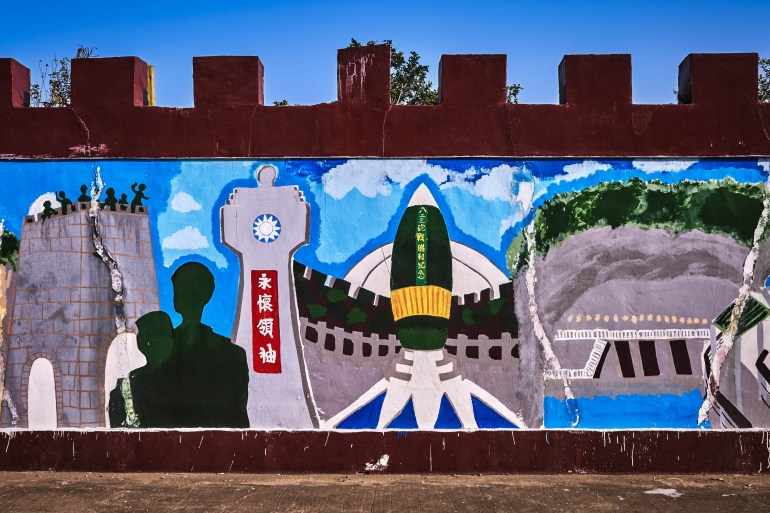
A porcupine strategy
The Republic of China Air Force (ROCAF) is small but efficient.It consists of 411 fighter aircraft in total, nearly half of which are modernised F-16s and French Mirage 2000 fighter jets.
ROCAF ground crews are some of the best trained in the world, able to repair runways in three hours, significantly quicker than any other military.
They are taught to fix and maintain their aircraft round the clock, getting their aircraft back in the air, a vital skill in any high tempo conflict.
Airfields are usually the primary targets of the opening stage of any war. In a full-scale conflict, controlling the target airspace is a significant advantage, often decisive.
Taiwan has adopted what Western analysts call a “porcupine” strategy. Designed to make invasion a thorny proposition, the concept is based on survivability.
The ROCAF’s planes are now extremely well protected with several underground airfields, buried deep within Taiwan’s mountain ranges. The aircraft take off and land from wide tunnels cut into the mountainside.
The Heng Shan Military Command Center is built under a mountain near Taipei and is designed to shelter thousands of personnel, allowing them to work, live and fight during any attack.
The underground complex also has direct contact with the US Indo-Pacific Command in Hawaii, feeding and receiving vital data from early-warning radar, surveillance aircraft and satellites overhead, all working to make sure that a surprise attack is an impossibility.
There are backup centres too. In the south of the island, jet aircraft are refuelled and rearmed in safety, operating from wide tunnels built into the Stone Mountain complex at Chihhang Air Base.
In the north, the Air Operations Center controls a complex network of satellites, early warning radars, listening posts and missile defence systems, designed to protect Taiwan’s airspace.
These underground bases are all linked by tunnels and hardwired communications. Multiple back-ups exist so if a complex is destroyed, others will take over and continue to play a part in the battle.
Taiwan’s advanced ultra-high-frequency early warning radar can detect missile launches and flight paths much earlier than its neighbours. Any missiles fired at US targets like Andersen Air Base on the island of Guam, which lies 2,700km (1,678 miles) southeast, would have to fly over Taiwanese airspace. This would warn Taiwan’s allies of an imminent attack, providing vital extra time to protect and move valuable assets.
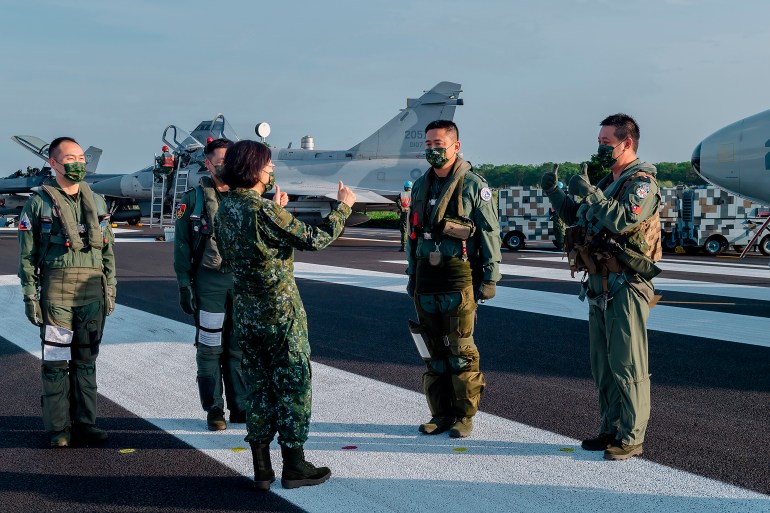
Taiwan’s allies
Taiwan would not fight alone.The US has pledged it would robustly come to its aid if attacked by China. Significant US assets are based on Okinawa, one of Japan’s southernmost islands, for just this purpose. Fighter squadrons from the US Air Force would be able to reach Taiwan in under an hour, leaving the PLA with very little time to inflict a knockout blow on the island.
The island is home to 32 US bases, Kadena airbase being the most important. A potent mix of F-15 long-range fighter jets, squadrons of early warning aircraft, refuelling tankers and transport planes, including Hercules and Ospreys, are trained to attack any force attempting to invade Taiwan. The island is also home to 20,000 US marines, ready to deploy at a moment’s notice.
Furthermore, in the likelihood of increased tension, the US navy would have at least one aircraft carrier strike group in range and most likely more.
In 1996, the last time tension was high between China and Taiwan, the US navy sent two aircraft carrier strike groups and an amphibious assault ship. These groups are fleets of ships and submarines that protect an aircraft carrier from attack and are potent weapons themselves. In any potential conflict in the near future, it is likely that at least three carrier groups would be brought to bear.
Cruise missile submarines like the USS Ohio or USS Michigan would be able to surface close to the target country and shower it with more than 300 cruise missiles between them, each able to destroy targets hundreds of kilometres inland with little to no warning. Their targets would be Chinese harbour facilities, command and control centres, air bases, fuel depots and other key locations.
The US Seventh Fleet is based at the US naval base in Yokosuka, Japan. With up to 70 ships and submarines in its command, combined with 150 aircraft, it is the largest fleet based outside the continental United States. This combined US firepower, so close to Taiwan, acts as a real deterrent. In order for China to prevail, it would have to engage multiple US targets, while simultaneously trying to land a large assault force onto the main island of Taiwan itself.
It is not just about numbers. The US has decades of experience and training behind it, while China has virtually no naval combat experience. China would be no pushover, however, and several US think-tanks estimate that the US would have to commit as much as 70 to 80 percent of its naval firepower in order to win any conflict with China.
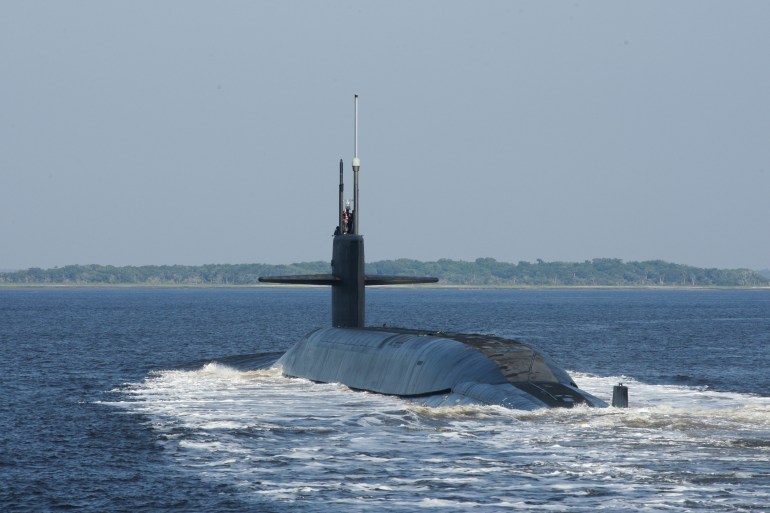
Japan an ally
Alarmed by Chinese overflights into Taiwanese airspace, Japan has beefed up its military presence and has been in talks with Taiwan for plans to come to Taiwan’s aid if it is attacked.Japan has begun to fortify the southern island of Ishigaki with medium-range anti-aircraft and anti-ship missiles. There are plans to station hundreds of troops there, who would quickly be able to come to Taiwan’s defence if needed.
Japan’s Self Defence Forces, as it calls its military, have slowly been arming themselves for the possibility of a regional conflict drawing in the island nation. In July last year, Japan’s then-deputy defence minister Yasuhide Nakayama called Taiwan a “democratic country” that should be defended, the country’s military planners acknowledging that any military action in the Taiwan Strait would automatically draw in Japan.
Japan’s navy regularly showcases its new helicopter carriers, the Izumo and Kaga. At 248 metres (271 yards) long, they can also be used as light aircraft carriers and will now be equipped with the latest F-35B stealth fighter jets. Add to that Japan’s advanced Aegis radar-equipped naval vessels and a growing arsenal of missiles, and Taiwan has a potent ally that is increasingly willing to involve itself militarily, even if Japan’s territory is not under threat. The feeling in its military is that if Taiwan is taken, Japan’s outlying islands would be next.
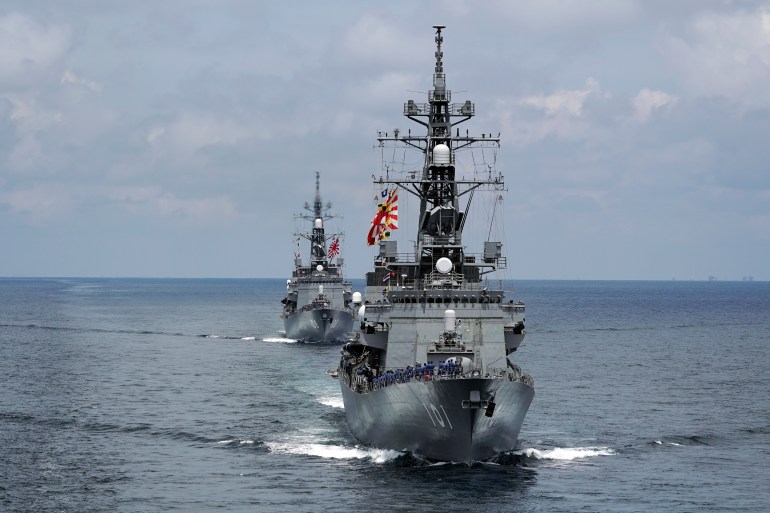
China’s maritime power
China’s defence budget, currently standing at $229bn, has been growing annually for at least a decade. Its spending has boosted research and development into new systems across the three services of its military, the clear emphasis being on enhancing the country’s maritime power.New aircraft carriers are being designed and built, the latest being the same size as the American conventionally-powered Kitty Hawk class, the largest non-nuclear powered aircraft carrier to date. There are plans for more, probably nuclear-powered, designs to match current American carriers. Nuclear fuelled aircraft carriers have virtually unlimited range and China plans to have six carrier strike groups by 2035.
The marine force, expert in amphibious warfare, is being massively boosted, from 20,000 to 100,000. Troop training and military exercises are increasingly realistic. Transport ships and sophisticated, amphibious landing ships are being built to be able to deliver soldiers and armoured vehicles onto hostile beaches, take them and hold them until reinforcements arrive.
More than any other goal, China’s vast military is geared up for the reunification of Taiwan with mainland China. Millions of soldiers, hundreds of ships, and hundreds of planes are all tasked with this purpose. It is China’s and Xi’s top priority.
Xi has long pushed the military to train in an increasingly realistic manner. The list of new weapons systems the PLA has recently received is comprehensive and staggering in amount.
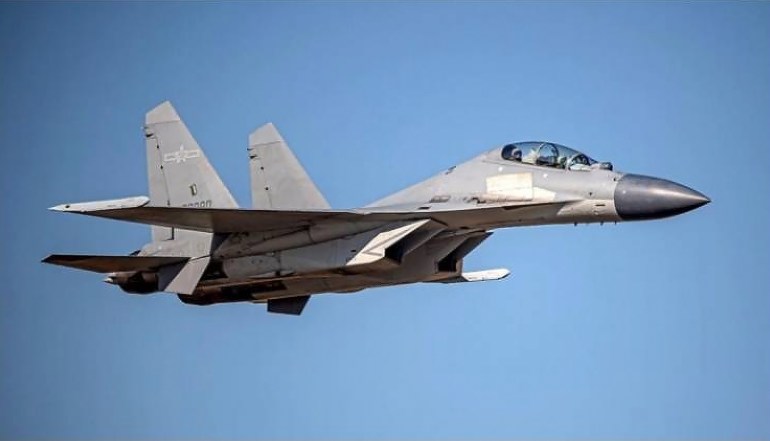
Weapons testing
Ultra-fast hypersonic weapons have been successfully tested. Anti-ship ballistic missiles have been developed, their targeting and testing carried out in the Taklamakan Desert in the Xinjiang Uighur autonomous region in China’s northwest, away from prying eyes.Satellite imagery in November 2021 confirmed the static model of a US aircraft carrier in the desert. Close by was a model of a US Arleigh Burke-class destroyer. These mock-ups would be used to test a new type of weapon – the anti-ship ballistic missile.
These missiles are designed to track and hit an aircraft carrier, or other major ship, at hypersonic speeds, punching a hole through the flight deck and detonating inside the vessel and destroying it. This type has never been used in conflicts before but would be a serious threat to allied ships.
China’s use of missiles has traditionally been defensive, its anti-access/area denial (A2/AD) strategy designed to make an adversary’s life difficult if it approached the Chinese mainland. But increasingly sophisticated weapons, anti-ship missiles with longer ranges, can now take on offensive roles, bringing the fight to China’s enemies.
China’s navy would play a key role in an invasion, the PLA navy’s two aircraft carrier groups being used to attack important targets on the island. The navy’s assault ships would assist in any landing but would only be able to carry a fraction of the troops needed for a successful operation.
To get around this shortfall in military transport ships, President Xi has announced the fusion of civil and military operations. Civilian vehicle ferries now have had their on/off ramps reinforced to take armoured vehicles. In the event of any conflict, large numbers of these would be requisitioned by the military to serve as troop transports.
Airpower would also be key to success. The PLA Air Force (PLAAF) has been equipped with increasingly sophisticated aircraft, such as the J-16, its own stealth fighter the J-20, and an array of drones that can scour the sea for enemy vessels, relay vital information back to command centres and, if need be, destroy their targets then and there.
The PLAAF has been rapidly expanding air bases closest to Taiwan. Satellite imagery has picked up the massive expansion of Longtian airbase in Fujian province, opposite Taiwan, over the past year and significant improvements have been made to others along the coast. These improvements boost the air force’s ability to sustain an air campaign, allowing for more sorties over a potential target and would greatly add to China’s combat power in the region.

The known unknowns
The sheer scale of any potential invasion would be colossal and many aspects of it would be unprecedented.Both sides possess long-range, precision strike missiles. Both sides also possess significant cyberwarfare capabilities but it would only be with boots on the ground, the physical presence of PLA soldiers dominating the local physical battlefield, that would win this conflict. The distances they would have to travel to do this would be formidable.
Estimates of the number of troops needed to successfully take the island range from 400,000 to more than two million. Hundreds of transport ships would be needed, a tall order even if all of China’s merchant fleet was used. Hundreds of naval vessels would be needed to protect this giant fleet of vulnerable, unarmed transports.
Hundreds of helicopters and transport planes would be needed for a strike force that would seize key installations in the opening phase of the invasion. It would take days to load this giant force and in today’s satellite-monitored world there would be no way a force of this size could remain hidden.
Taiwan would be fully alerted and have more than enough time to mobilise its reserves. Its allies would immediately start reinforcing Taiwan’s position.
The challenges in keeping a large mechanised force armed, fed and supplied so it can swiftly seize key objectives and fight successfully through heavily defended and populated urban areas would be huge and next to impossible in any timeframe that would guarantee success. Keeping hundreds of thousands of expeditionary troops combat-effective in the middle of a battlefield would involve a huge supply chain, while possible in peacetime, it would struggle to function in the hostile waters of the Taiwan Strait.
These factors, coupled with determined and well-armed allies, the topography of Taiwan itself, the preparedness of its military, and the sheer weight of world opinion that would turn sharply against mainland China if it tried to invade Taiwan make it an unlikely prospect for the present.
Blockades of ports and general overflights, grey operations – aggressive actions that stop just short of conflict – conducted by China’s coast guard and general intimidation are more likely prospects if Taiwan were perceived to be moving towards a formal declaration of independence.
A military deterrent against any such thoughts by Taiwan’s leadership needs to be plausible, however, and that is exactly what China is working towards.
SOURCE: AL JAZEERA




